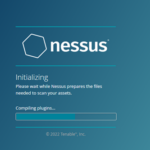How to use find is a very basic, but important, UNIX lesson. Find is a very useful command which can help us not just finding a particular file, but for examples files or directories matching certain criteria such as: size, permissions, type. The basic mode of operation for find is the following: find path criteria action find --> we use 'find' to invoke the … [Read more...]
How to install Mate on FreeBSD 12/13
In this how to install Mate on FreeBSD I’m not going to repeat the same guides you can read elsewhere. If you desire to use FreeBSD as a daily driver desktop, I do encourage you to read and follow the guides from this other guy. The guide you are currently reading can be considered the first block on your journey to a full FreeBSD desktop computer. If you find the articles in … [Read more...]
How to install Nessus 10 on FreeBSD 12
Nessus is a professional vulnerability scanner from the reputable cybersecurity company Tenable. I have already written about it in the past but installing it on a GNU/Linux distro. This very article will guide anyone to install Nessus 10 on FreeBSD, since Tenable is releasing binaries for FreeBSD 11 and 12 as of the time of writing. Of course, anyone can use a free version … [Read more...]
How to enable TLS traffic from the origin server on Cloudflare Argo Tunnel
As it can be read in the last post, setting up a Cloudflare Argo Tunnel to serve web content from home or corporate network without poking holes to it, is quite easy to achieve. In this article I’ll show you how to enable TLS traffic from the origin server on Cloudflare Argo Tunnel. Obviously, you will want to serve your content at the edge server with TLS enabled too, but … [Read more...]
How to use Cloudflare’s Argo Tunnel service to publish a website on FreeBSD 12/13
What is the Cloudflare Argo Tunnel service? In short, a tunneled connection between a host and Cloudflare’s network. A longer depiction can be read in a blog entry of theirs, but I would put it as a secure way to connect the services you want to publish using their network as a shield. An example will help to better understand this. Let’s say we want to self-host a personal … [Read more...]




